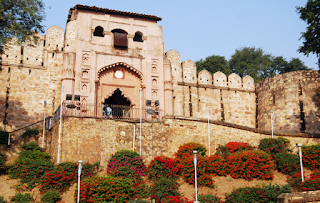Jim Corbett National Park: Natural Heritage
Jim Carbet National Park should be called an heritage for wildlife lovers. In fact, Jim Carbet National Park should be called the Conservation Area of Bengal Tiger.
Yes, keeping in mind the tiger conservation, it was established in the form of a Halley National Park. This National Park of Nainital in Uttarakhand, India's State is India's oldest national park.
Experts believe that in the year 1936, it was declared specially as Tiger Rescue Area. Bratish officers performed a special role in its establishment
It is therefore known to be known as National Park by the name of Brittish Hukmars. The Jim Corbett National Park, which is under the Tiger Conservation Project, is the first gardener in the country.
Particularly it is also known as the proud animal sanctuary. Jim Carbet National Park is spread over an area of 1318 square kilometers in the Patalidun valley of Ramganga. It has a tiger reserve area of about 821.99 square kilometers.
Experts believe that the Jim Corbett National Park is a beautiful and beautiful natural gift of the sub-Himalayan region. Its visibility is very beautiful. More than 500 species of plants are flowered and flourished here. Experts believe this is an ideal park for tourists and wildlife.
In addition to the Bengal Tigers in the Jim Carbet National Park, tourists are attracted to lions, elephants, rhinoceros, bears, wild pigs, deer, chital, sambhar, pandas, peas, nilgai, scales and cheetahs etc. Particularly in this vast national park, different species of dragon are preserved.
Specially luxurious lakes and waterfalls are the splendor and splendor of the Jim Corbett National Park. The grasslands of grass here attract tourists, while the moorland area provides shelter to animals and wildlife. Not only that, in the Jim Corbett National Park, dangerous and dreaded animals and animals are also found in large numbers.
More than 600 extinct species of birds make the pride of Jim Corbett National Park. From the species of colorless birds, the aura of Jim Corbett National Park sparkles in the rainbow.
Jim Corbett National Park is a favorite among global tourists. Visitors coming from abroad come on a visit to India, then visit and visit the Jim Corbett National Park.
Experts believe that the Bratish officers were fond of wildlife. So this National Park was brought into existence. According to experts, the name was named Heli National Park after the name of the current British Governor Malcolm Haley. After the independence movement it became known as Ramganga National Park.
Experts believe that the horror of man-eating lions in Kumaon had become terrible. To get rid of man-eating lions, the world's famous hunter Jim Corbett was called. Jim Carbat kills man-eating lions.
After this, the name of the hunter Jim Carbat was spread rapidly once again in the world. Jim Corbett's full name was James Edward Corbett. After this its name was changed to Jim Corbett National Park.
The Government of India understood the popularity of Jim Corbett and in 1957 it was named Jim Carbet National Park. Notably, there is the Jim Corbett National Park Museum in Nainital. Jim Carbet National Park is rich in natural resources.
The Jim Corbett National Park has all the necessary resources for tourists. There is also a great guest house. There are 200 tourist accommodation arrangements in this guest house. Eating is also excellent management.
All necessary resources are available for the visit of Jim Corbett National Park. The nearest airport is Pantnagar Airport. The distance of Jim Carbet National Park from Pantnagar Airport is about 65 kilometers. The nearest railway station is Kathgodam Junction. Visitors can also visit Jim Corbett National Park by road.
29.447200,79.152460
29.447200,79.152460



















































